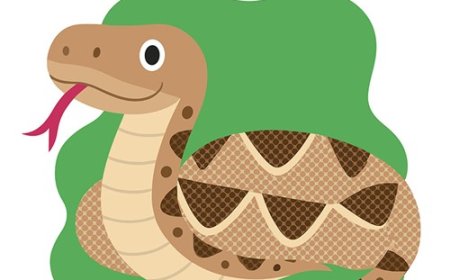Hamster Facts for Kids – Fun Guide to Hamster Care, Behavior, and Habitats
Discover fascinating hamster facts for kids! Learn about hamster habitats, diet, behavior, and how to care for them as pets. Includes fun facts and a quiz.
Hamster (Cricetinae)
Introduction
Hamsters are small, furry rodents belonging to the subfamily Cricetinae. Known for their round bodies, chubby cheeks, and endearing personalities, hamsters are popular pets around the world. There are about 18 species of hamsters, but the most common ones kept as pets include the Syrian hamster (Mesocricetus auratus), dwarf hamsters like the Roborovski (Phodopus roborovskii) and Campbell’s dwarf hamster (Phodopus campbelli). These animals are especially well-known for their habit of stuffing food into their expandable cheek pouches and hoarding it for later. Hamsters are nocturnal and love to dig, burrow, and explore, making them fascinating creatures to study and care for.
Physical Description
Hamsters are small, stout-bodied rodents with short legs and tails. They typically range in size from 5 to 18 centimeters (2 to 7 inches) depending on the species. Syrian hamsters are the largest among the common pet species, while Roborovski hamsters are among the smallest. They have soft fur that can come in a variety of colors and patterns, including golden, gray, white, black, cream, and combinations of these. Some hamsters have long hair (such as the long-haired or “teddy bear” Syrian hamster), while others have short, velvety coats.
One of their most distinctive features is their expandable cheek pouches. These pouches stretch from their cheeks down to their shoulders and allow hamsters to carry large amounts of food or bedding material back to their burrows. They have sharp incisors that never stop growing, so they need to gnaw regularly to keep their teeth healthy. Their eyes are usually black or red, and their sense of smell and hearing are much more developed than their eyesight.
Habitat and Distribution
In the wild, hamsters are found in parts of Europe and Asia. Their natural habitats include deserts, steppes, and scrublands, particularly in countries like Syria, China, Mongolia, and Russia. Wild hamsters prefer dry environments with loose soil where they can dig complex burrow systems. These burrows may include multiple chambers for sleeping, storing food, and raising young.
Despite their origins in arid environments, hamsters have adapted well to life in captivity. Today, they are bred around the world as pets and as research animals. They are terrestrial, meaning they live on the ground, although they are good diggers and spend a lot of time underground in natural habitats.
Diet and Hunting Behavior
Hamsters are omnivores. In the wild, their diet consists mainly of seeds, grains, nuts, fruits, vegetables, and occasionally insects or small invertebrates. Their strong sense of smell helps them locate food even in the dark, which is important because they are mostly active at night.
Hamsters are foragers rather than hunters. They do not chase prey but instead collect food and store it in their cheek pouches. Once they return to their burrow, they stash the food in underground storage chambers. This behavior ensures they have enough to eat during times when food is scarce.
Pet hamsters are typically fed a balanced diet of specially formulated pellets, supplemented with small amounts of fresh fruits and vegetables. It's important not to feed them citrus, onions, chocolate, or other harmful foods.
Reproduction and Lifecycle
Hamsters have a relatively short lifespan, typically living between 2 to 3 years. However, during this time they are very active reproductively. Hamsters reach sexual maturity at just 4 to 6 weeks of age. The mating process is brief and can be aggressive; therefore, males and females are often kept apart except for controlled breeding sessions.
The gestation period varies by species but generally lasts about 16 to 22 days. Syrian hamsters have one of the shortest gestation periods among mammals—only 16 days! A female can give birth to a litter of 4 to 12 pups. The babies are born hairless, blind, and completely dependent on their mother.
The mother hamster is highly protective and will nurse her young for about 3 weeks, after which the pups begin eating solid food. In the wild, once the young are weaned, they quickly become independent. In captivity, young hamsters are usually separated to prevent fighting and overpopulation.
Behavior and Social Structure
Hamsters are primarily nocturnal and crepuscular, meaning they are most active at night and during twilight hours. They spend their waking hours foraging, digging, grooming, and running—sometimes several miles per night on a wheel if kept in captivity.
Syrian hamsters are solitary and can be very territorial. If two adult Syrians are housed together, they may fight—sometimes to the death. Dwarf hamsters, on the other hand, are more social and can sometimes live in same-sex pairs or small groups if introduced properly and monitored closely.
Hamsters communicate through body language, vocalizations (like squeaks and chirps), and scent marking. They are known to mark their territory with secretions from glands located on their hips. This helps them feel secure and identify their personal space.
Conservation Status
While pet hamsters are bred in large numbers and are not at risk, some wild hamster species are facing serious threats. The European hamster (Cricetus cricetus), for example, is critically endangered due to habitat loss, agriculture, and urban development. Efforts are underway in parts of Europe to protect remaining populations and restore their habitats.
Many hamster populations in the wild are declining, largely due to human encroachment on their natural habitats and climate change. Conservation groups and researchers are working to understand their needs better and promote practices that protect their environment.
Cultural Significance
Hamsters have not played major roles in traditional mythology or folklore, but they have become cultural icons in the modern world as beloved pets. Since their domestication in the 1930s, hamsters have been featured in children's books, cartoons, advertisements, and even viral internet videos. Their curious nature and adorable looks have made them favorites among pet owners and students.
In some cultures, keeping a hamster is considered a sign of responsibility and nurturing. Pet hamsters have been used in classrooms to teach students about animal care, life cycles, and responsible pet ownership.
Interesting Facts
- Hamsters can run up to 9 kilometers (5.5 miles) in a single night on a wheel or in the wild.
- The Syrian hamster was first discovered in the wild in Syria in 1839, but all domestic Syrian hamsters today are believed to be descended from a single litter captured in 1930.
- Hamsters have poor eyesight but an excellent sense of smell and hearing. They use their whiskers to sense their environment.
- They are expert escape artists and can squeeze through very small openings due to their flexible skeletons.
- Hamsters practice "hibernation" or torpor when temperatures are too low, entering a sleep-like state to conserve energy.




















































